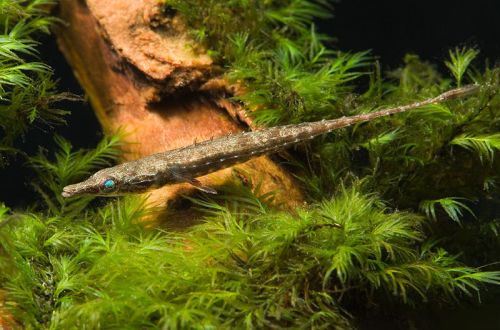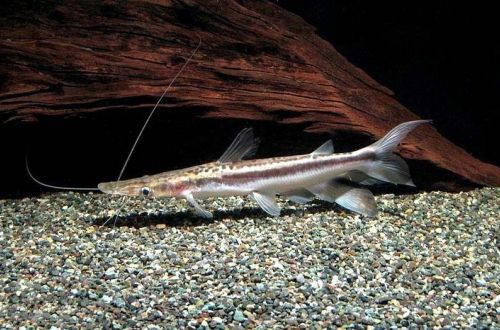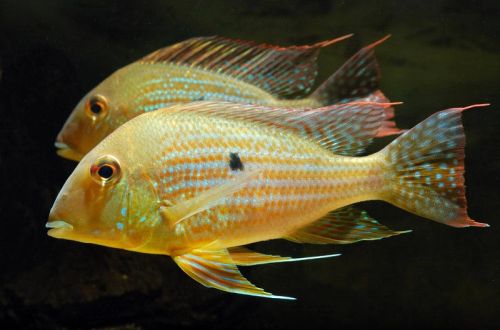
Hindustoma
Indostomus, scientific name Indostomus crocodilus, belongs to the Indostomidae family. The unusual appearance of this fish is extremely practical in nature, and is designed to disguise it from predators. In a home aquarium, it does not cause difficulties with maintenance; it can be recommended to beginner aquarists.

Contents
Habitat
It comes from Southeast Asia from the Malay Peninsula, on which the southern provinces of Thailand and the northern states of Malaysia are located. Inhabits marginal standing waters and peat bogs. The natural habitat is characterized by an abundance of fallen leaves, silty substrates, numerous snags and aquatic vegetation.
Brief information:
- The volume of the aquarium – from 40 liters.
- Water and air temperature – 22-27°C
- Value pH — 5.0–7.0
- Water hardness – soft (0-5 dGH)
- Substrate type – sandy
- Lighting – subdued
- Brackish water – no
- Water movement – moderate
- The size of the fish is 3 cm.
- Feeding – any food of suitable size
- Temperament – peaceful
- Keeping alone or in a group in the company of other fish
Description
Adult individuals reach a length of only 3 cm. Males have elongated ventral fins, the outer rays of which are bent inward. In females, these fins are short and straight. However, due to the size of the fish itself, such differences are barely noticeable. Indostoma has a good disguise – an elongated and thin body, resembling a small branch of a tree or shrub. The brown texture of the outer covers only enhances this effect.
Food
In nature, they feed on small crustaceans, insect larvae, small worms and other zooplankton. In a home aquarium, it will accept dry, fresh and live food. The daily diet may consist of flakes, granules combined with brine shrimp or daphnia.
Maintenance and care, arrangement of the aquarium
Such a miniature fish does not need large volumes, a tank of 20-40 liters is quite enough, for example, a nano-aquarium. The design should partly resemble the natural habitat. Subdued level of lighting, dense thickets of shade-loving plants. Be sure to have shelters in the form of snags or any decorative items. The substrate is soft sandy.
The filtration system is designed to maintain high water quality. The same purpose is served by the obligatory procedures for maintaining the aquarium – this is at least cleaning the soil and design elements, replacing part of the water with fresh water.
It is worth remembering that the filter is the main source of flow in the aquarium, and the Indostoma reacts poorly to excessive water movement, since it lives in stagnant reservoirs in nature. Therefore, when choosing a filter model, this nuance must be taken into account.
Behavior and Compatibility
Peaceful calm fish, can be kept both in a group and one by one. The choice of neighbors must be approached with caution, because of their modest size, large species can be a threat. Good compatibility is achieved with cyprinids, for example, Danio.
Breeding / breeding
Breeding is quite simple. With the onset of the mating season, males choose a suitable shelter – the place of future spawning. It can be a small cave, a grotto, or even an ordinary hollow PVC tube. The male protects his site from competitors, but it does not come to serious skirmishes. When the female chooses a partner for herself, they retire to the shelter and lay up to 50 eggs, then she swims away. The male takes care of future offspring, which is near the masonry throughout the entire incubation period. After the appearance of fry, parental instincts weaken. In order to preserve the juveniles, they are usually outlived in a separate tank with identical conditions.
Fish diseases
In a well-established and balanced aquarium ecosystem, health problems usually do not arise. Diseases occur with a significant deterioration in the conditions of detention, when the immunity of the fish is suppressed and cannot fight pathogens that are constantly present in the aquarium. For more information on symptoms and treatments, see the Aquarium Fish Diseases section.





